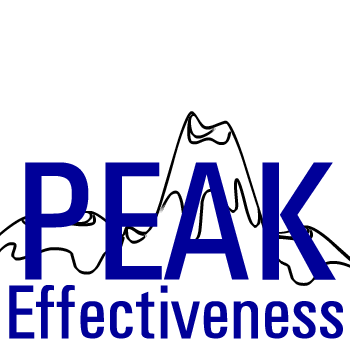






|
|
|
|
|
|
Get Engaged – At
Work and In Life!
The Deming Management Method,
Mary Walton, Perigree Books, Putnam Publishing Group,
Further reading: W. Edwards
Deming, Out of the Crisis, MIT Center for Advanced Engineering
Study, Cambridge, Mass., 1986.
The Fourteen Points:
1. Create constancy of
purpose for improvement of product and service.
What will be the method of production?
What new people will have to be hired?
What changes in equipment will be required?
What new skills will be required, and for how many people?
How will current employees be trained in these new skills?
How will supervisors be trained?
What will be the cost of production?
What will be the cost of marketing?
What will be the cost and methods of service?
How will the product or service be used by the customer?
How will the company know if the customer is satisfied?
Mistakes, negativism, defects, poor workmanship, bad materials, handling damage, delays, fearful and uninformed workers, poor training, inattentive and sullen service is unacceptable.
3. Cease dependence on mass
inspection.
Improve the process to build quality in, not inspect final
product to weed poor quality out.
A certain amount of inspection will always be required, to find
out how you are doing, to obtain data for control charts.
4. End the practice of
awarding business on price tag alone.
Seek the best quality and work to achieve it with a single
supplier for any one item in a long-term relationship of loyalty and
trust, with engineering and other departments of supplier and customer
working together to reduce costs and improve quality.
5. Improve constantly and
forever the system of production and service.
Continuously look for ways to reduce waste and improve quality,
involving all involved in the process.
6. Institute training.
Use control charts to determine whether a worker's performance is
in statistical control until output is in a stable state.
7. Institute leadership.
Help people do a better job.
Discover and remove the barriers that prevent workers from taking
pride in what they do.
Learn by objective methods who is in need of individual help.
8. Drive out fear.
9. Break down barriers
between staff areas.
10.
Eliminate slogans, exhortations, and targets for the workforce.
Let people put up their own slogans.
11. Eliminate numerical
quotas.
A proper work standard would define what is and is not
acceptable in terms of quality.
Study the work and determine
the limits of the job.
Where are the hangups?
12. Remove barriers to
pride of workmanship.
Remove misguided supervisors, faulty equipment, and defective
materials.
13. Institute a vigorous
program of education and retraining.
Educate all in new methods, including teamwork and statistical
techniques (i.e., significance of variation and rudimentary knowledge of
control charts).
No one must lose his job because of improvements in productivity!
14. Take action to
accomplish the transformation.
Create a special top management team with a plan of action to
carry out the quality mission.
Discuss principles until you reach a common understanding and
agree upon and commit to plan to implement the new philosophy.
Create a critical mass within the company that understands the
principles and the need for change, via seminars, etc.
Every activity is a process of improvement, a team working in the
Shewhart Cycle (Plan, Do, Check, Act) to address a specific issue.
Demonstrate commitment by spending time and money on training and
equipment, shutting down operations when something is wrong.
The Deadly Diseases:
4. Mobility of management.
·
neglect of long range planning
·
relying on technology to solve problems
·
seeking examples to follow rather than developing solutions
(It is important to know why a practice succeeds or
fails.)
·
excuses
Important principles:
Base decisions as much as possible on accurate and timely data.
Use statistical methods to understand processes, bring them under
control, and then to improve them.
Differentiate between special causes (points outside the limits on
control charts) and system problems, called common causes.
Statistical methods point out the existence of special causes.
A point beyond limits on a control chart, or a significant result
in an experiment or test, indicates almost certainly the existence of
one or more special causes. Points in control, or showing no
significance, indicate that only common causes of variation remain.
When you find most of the special causes and eliminate them, you have
left common causes of variability, removal of which calls for action by
administration at a high level.
A system can best be improved when special causes have been
eliminated and it has been brought into statistical control.
At that point, management can work effectively on the system,
looking for ways to reduce variation.
Variation is part of any process.
The job of the leader is the shrink the control limits, to get
less and less variation in a process, or less and less difference
between people by eliminating the sources of variation.
Problems, or quality defects, can be solved by use of Cause-and-Effect
(using categories of materials, methods (or policies or procedures),
manpower, and machines), Flow Charts (eliminate the "no" or "fail"
loops), or Pareto Charts to pinpoint the causes, which can then be
worked upon or eliminated.
"You have to know what to do, then do your best."
Planning requires prediction of how things and people will perform.
Tests and experiments of past performance can be useful, but not
definitive.
Workers work within a system that-try as they might-is beyond their
control. It is the system,
not their individual skills, that determine how they perform.
Workers are responsible for only 15 percent of the problems, the
system for the other 85%.
Only management can change the system.
Some workers will always be above the average, some below.
Design performance evaluations based upon "Exceeds expectations",
"Meets expectations" and "Fails to meet expectations", with the
expectations individually crafted at the beginning of each period to
meet the individual talents, experience, etc. in consultation with the
worker.
Page 25. The Deming Chain
Reaction.
Page 28. The Deming Flow
Diagram.
Page 87. The Shewhart
Cycle.
Pages 98 - 114. Seven
Helpful Charts.